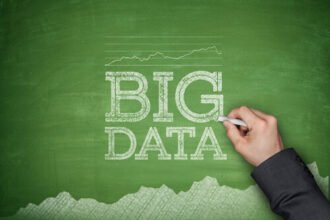 Having made your first important decision about what to measure in part one of this blog series, HR ’s next key decision is how to deliver the reporting and analy
Having made your first important decision about what to measure in part one of this blog series, HR ’s next key decision is how to deliver the reporting and analy Having made your first important decision about what to measure in part one of this blog series, HR ’s next key decision is how to deliver the reporting and analytics related to the goals you have chosen. This decision is complex, as it involves the technical aspects of IT and data management, as well as, the human elements of decision-making and HR ’s role to support business leaders throughout the organization.
Having made your first important decision about what to measure in part one of this blog series, HR ’s next key decision is how to deliver the reporting and analytics related to the goals you have chosen. This decision is complex, as it involves the technical aspects of IT and data management, as well as, the human elements of decision-making and HR ’s role to support business leaders throughout the organization.
 Having made your first important decision about what to measure in part one of this blog series, HR ’s next key decision is how to deliver the reporting and analytics related to the goals you have chosen. This decision is complex, as it involves the technical aspects of IT and data management, as well as, the human elements of decision-making and HR ’s role to support business leaders throughout the organization.
Having made your first important decision about what to measure in part one of this blog series, HR ’s next key decision is how to deliver the reporting and analytics related to the goals you have chosen. This decision is complex, as it involves the technical aspects of IT and data management, as well as, the human elements of decision-making and HR ’s role to support business leaders throughout the organization.From the technical perspective HR leaders need to:
A. Determine which data they need and what source they will use.
B. Decide how to extract, organize and store all of their data so it is available for reporting.
C. Choose an analytics solution to generate reports, dashboards and run ad-hoc queries.
D. Create a process that allows the right business leaders to view the information they need to make better people decisions.
All of the four components listed depend upon each other and it is the interaction between these components that creates the overall value of the final solution.
In order to create the right type of interaction between the four components, HR needs to focus on component C; choose an analytic solution to generate reports, dashboards and run ad-hoc queries. Traditional analytic technologies require a single source of data, such as a data warehouse, and staff specifically trained to use the software, in order to produce reports, etc. Modern workforce analytics applications have been designed to remove this barrier, allowing organizations to gain insight from their data quickly, and without needing to invest in additional learning or headcount to build the reports, dashboards, etc. The additional advantage of this type of application is that these solutions will import data from many sources, including sources outside of the organization. This removes the need to go through a complex and costly data integration project prior to generating workforce analytics.
The analytics solution you choose should also handle the sharing and security of your HR reporting. Although spreadsheets may seem an attractive tool, as they are low cost, this solution quickly becomes a roadblock to delivering value. Spreadsheets are not designed for collaborative decision-making and the value of the insights they generate, quickly get locked into the tool, and/or your costs start to increase as you need to hire more people to keep up with the demand for output.
The 2013 Visier Survey of Employers highlighted that those HR organizations who use spreadsheets as their workforce analytics tool are four times more dissatisfied, than those who are using a purpose-built tool.
The experience of organizations over the past few years have helped to definitively answer the question about which workforce analytics solution to use.
So many workforce analytics projects have become bogged down in the data management process that selecting a tool, which avoids the need for a central data repository, has become the best way to go. The high rate of satisfaction from dedicated workforce analytics solutions indicates that these are the types of tools that best serve the needs of executive and HR leaders. This is especially true when you include the fact that purposebuilt solutions reduce HR ’s reliance on IT support and, therefore, remove another common barrier to accessing HR data.
As the field of workforce analytics has matured, it has moved from a process whereby existing technologies are co-opted to serve new needs and become an area where the big barriers to success have been identified.
Through this process, new solutions have been created, which remove these barriers making it quicker, cheaper, and easier for HR organizations to be successful. When it comes to making the important decision of which workforce analytics solution to use, HR organizations need to meet the following criteria:
1. The solution should not need a central repository and complex extract, transfer and load (ETL ) process.
2. The solution should handle data that is internal to the organization AND data from sources external to the organization.
3. The solution should handle all types of reporting including dashboards, standard reports and ad-hoc reporting.
4. The solution should both produce and share the reporting, maintaining data security across the whole process.
5. The solution should be owned and run by HR with limited or no requirement for IT support.
The choice of technology for your workforce analytics program will be the single largest investment you make in this area. It is not a decision you can afford to get wrong. Making your decision to meet the criteria listed above is a sure way to achieve the highest levels of satisfaction demonstrated by those who are working with a dedicated workforce analytics application.
image: workforce/shutterstock







